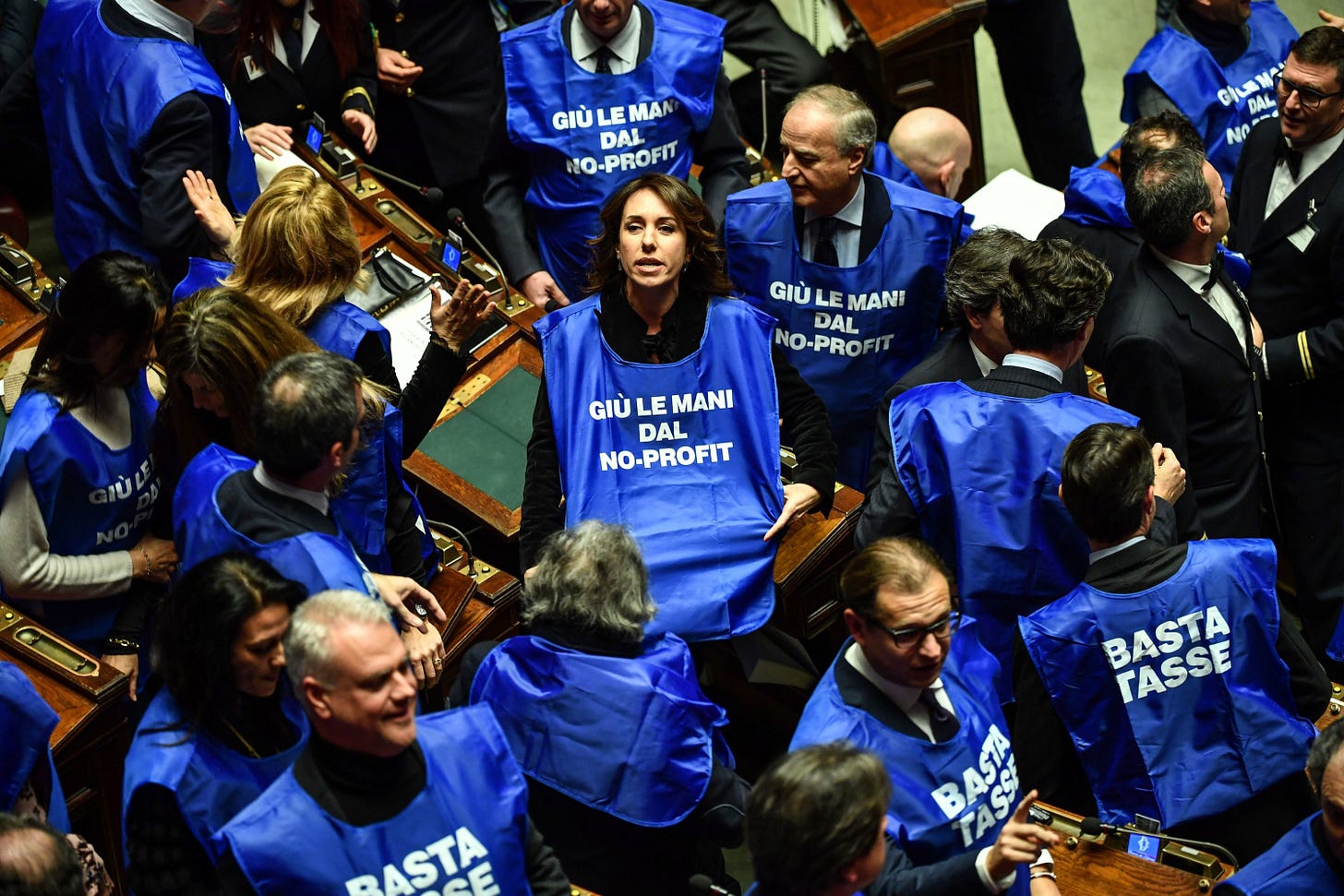Government Debt Still Matters – Just Ask Italy
Thanks to alpine levels of public debt, Italy is on the verge of economic catastrophe.

It has become fashionable in academic and political circles to argue that large government budget deficits are harmless as long as the interest rate at which the government can borrow remains very low. Proponents of such a theory have to contend with the difficult case currently unfolding in Italy.
Even with low interest rates, a country can run into a serious public-debt crisis. It can do so if, as is presently the case in Italy and to a lesser extent in the United States, it has the unfortunate combination of a high starting public-debt-to-GDP ratio, a large primary budget deficit (the budget deficit excluding interest payments), and trouble generating economic growth.
Before the coronavirus epidemic pummeled the Italian economy, Italy had a public-debt-to-GDP ratio of 135 percent. That made Italy the Eurozone’s second-most indebted country after Greece. The coronavirus epidemic will now make Italy’s already bad debt situation worse by causing the Italian economy to contract by a projected 10 percent in 2020. That, in turn, will likely result in the Italian budget deficit ballooning to around 9 percent of GDP as tax revenues decline, while Italy’s public-debt -to-GDP ratio skyrockets to a staggering 160 percent of GDP by the end of 2020.
Italy’s public debt vulnerability results not only from the country’s high debt-to-GDP ratio. Rather, it’s also because Italy has a high primary budget deficit and a poor growth record that will be difficult to correct as long as policymakers are constricted by the Euro. Those two weaknesses will cause Italy’s debt-to-GDP ratio to keep rising even were Italy continue to be able to borrow at low interest rates.
Take an arithmetical example based on Italy’s current situation to illustrate the point. Even assuming that Italy could borrow at an inflation-adjusted rate of 1 percent and that it could get its economy to grow by 2 percent, it would still need to have a primary budget deficit of no more than 1.5 percent of GDP if its public-debt-to-GDP ratio was not to keep rising above its projected level. But Italy is now running a primary budget deficit of more than 5 percent of GDP. If maintained, such a deficit will cause its public-debt-to-GDP ratio to keep rising to ever-higher levels.
It also does not help matters that Italy is stuck with the Euro as its currency, denying it an independent monetary or exchange rate policy to help boost its economy. As a result, if Italy tried to reduce its budget deficit by cutting government expenditures, its economy would almost certainly not grow at 2 percent, and its public-debt-to-GDP ratio would still keep rising.
It gets worse. Italy’s shaky banking system is likely to be hit hard by the country’s worst post-war economic recession on record. That shock is likely to cause non-performing loans to balloon, which might require that the Italian government will have to bail out its banks at a cost of between 10 and 15 percent of GDP.
Another factor that could cause Italy’s public-debt-to-GDP ratio to rise at an even faster rate would be if the interest rates available to the Italian government were to rise—which already seems to be happening. The interest rate at which the Italian government can borrow is now 2.5 percent higher than the rates offered to Germany (and the reason isn’t Germany). Past experience suggests that the spread between Italian and German government borrowing rates could rise further if investors came to believe that Italy’s public-debt-to-GDP ratio was on an ever-rising path, or if the rating agencies were to downgrade Italian government bonds to junk status.
All of this suggests that Italy could be headed for another round of its sovereign debt crisis later this year. That does not bode well for an early U.S. and global economic recovery. Being the world’s third largest sovereign debt market, an Italian debt crisis has the potential to roil world financial markets. It also has to be of concern that an Italian debt crisis would come in the wake of a recent German Constitutional Court ruling that appears to have severely limited the European Central Bank’s ability to bail Italy out.
But at least it could be a productive opportunity to dispel a kooky theory that in a world of low interest rates we need not worry about budget deficits.

